Gemstones are generally minerals that have been, or can be, crafted for use in personal adornments. As a rule, they are beautiful, rare and durable.
The term “gem” has become a commonly accepted designation for all valuable ornamental stones, eliminating the earlier artificial distinction between so-called “precious” and “semi-precious” stones.
The rarity, beauty and intrinsic perfection that they bring, as a result of a millenary work of geological purification, are what give these gems fundamentally a connotation of value.
In the jewelry sector it is common to associate certain adjectives to a particular gem. For example, Imperial Topaz Extra is known as “Sherry Topaz” because its color is similar to the wine of the same name.
Likewise, people in the sector often use the name of mines, countries, cities or states - "Tatu" for Aquamarine, "Burma" for Ruby, "Colombia" for Emerald and Paraiba for Tourmaline - to describe the color gems.
Most of the Diamonds used in the Industry are colorless or with hints of yellow or brown. The GIA classifies Diamond’s colors from D to Z. The greater the absence of color, the closer to the letter "D" and the more visible and intense the yellow, the closer to the letter "Z".

Few things in nature are absolutely perfect. This also applies to Diamonds, which have internal characteristics, called inclusions, and irregularities in the surface, called "blemishes" or stains. Together they are known as the diamond's clarity characteristics. Obviously, Diamonds value more if they are cleaner and purer, keeping all other factors constant. GIA classifies Diamonds from FL (Flawless or Immaculate) to I3 (Included or with Inclusions).

The cut factor must be analyzed in two ways simultaneously: first, the kind of faceting must be observed, that is, if it is round brilliant (Amsterdam / Complete) or "fancy", as other cuts are known, such as: heart, baguette, marquise, emerald, etc.; the second factor is the quality of the cutting itself, where the symmetry and quality of the polishing is judged. According to the GIA, the diamond cut is classified from Excellent to Poor.
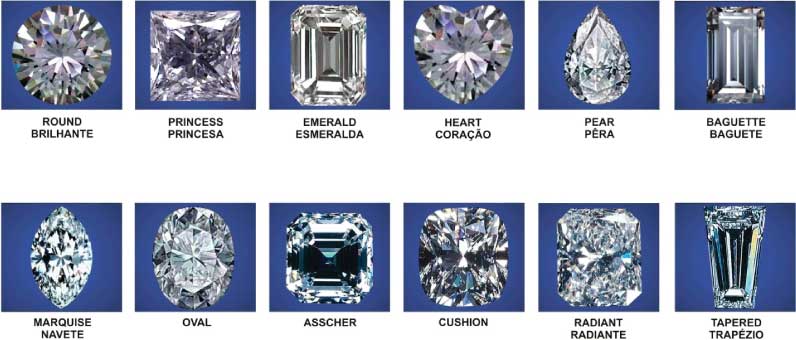
Gr (grams) and Kg (kilogram) are too large units of measurement too large to be used with cut gemstones in general, so ct (carat) is used.
Carat (ct) is therefore a measure of weight. In 1907 it was agreed that 1 (one gram) is equivalent to 5 ct (five carats).
The origin of the word carat comes from the carob bean used by the old merchants.
In the case of Diamonds, the larger they are, the more difficult to find, and as a rule, keeping all the other factors constant, larger Diamonds cost more than smaller ones.
Diamond received this name due to its incomparable hardness (from the Greek “adamas”, which means unconquerable, indomitable).
It is considered the king of gems and has been used as an adornment since ancient times.
It can be found in yellow, brown, colorless and black; more rarely, in green, blue, pink and red.
Diamond value is based on the 4 C's: Color, Cut, Clarity and Carat.
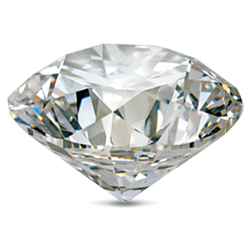
In ancient Greece, Sapphire was known as “sappheiros” which means “the beloved of Saturn”.
Some ancient societies believed that the earth rested on a Sapphire, which would be responsible for the blue color of the sky.
For centuries, Sapphire has been associated with royalty and romance. This association was strengthened in 1981 when Prince Charles of the United Kingdom gave Lady Diana Spencer an engagement ring with Sapphire and Diamonds. In 2011, the same ring was presented by Prince William to his fiancee, Kate Middleton.
Sapphire is the name given to all blue corundums, the most valuable being deep blue. There are colorless, pink, orange, yellow, green, violet and black Sapphires, which are known as Fancy Sapphires and are designated by the term Sapphire followed by their color.
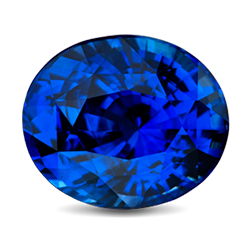
Ruby the second hardest gem after Diamond, owes its name due its red color (from the Latin “rubeus”). In ancient Sanskrit, Ruby is known as 'ratnaraj' or 'king of precious stones'.
Red is the color of the most intense emotions: love, passion and fury. It is associated with objects of power and desire, such as sports cars, royal robes and roses.
Large gems are rarer than Diamonds of the same size.
Its coloration is not always homogeneous, often showing stains.
It is presented in different shades of red, from light to deep pure red, known as “pigeon blood”, to mixtures that show bluish, purple, orange or brown tones.
In medieval Europe, it was believed that Ruby guaranteed health, wealth, wisdom and success in love. It can be found in Afghanistan, Kenya and Madagascar.
Commercially, the darker and more defined the red, the better; the less inclusions there are, the better; and gems over 5 ct are rare and more expensive per ct.
Curiosities: Auguste Verneuil produced the first synthetic Ruby in 1902 by exposing powdered aluminum oxide and coloring material to a torch flame.
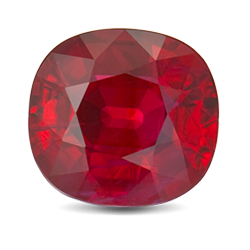
The name Emerald comes from the Greek "Smaragdos", which literally means green stone.
It is the most precious gem in the Beryl group. The inclusions, proof of authenticity, are known as gardens.
The gem often appears cloudy and only the finest qualities are transparent.
The first known Emerald mine was found in Egypt, where there is evidence of mining activity since 2000 BC. Cleopatra was known for her passion for Emeralds, and always wore it in her royal adornments.
Colombian Emeralds became known after Spanish expeditions to South America.
Brazil is one of the largest producers of Emerald, being mainly found in the states of Goias , Minas Gerais and Bahia and thanks to Mr. Júlio Sauer the Brazilian Emeralds are known as Emerald, and not only, “Beryl”. In 1963, after finding Emerald in the municipality of Salininha, in the state of Bahia, he took them to be tested in the GIA laboratories.
Most Emeralds have their inclusions filled with oil or resins or a mixture of the two. Untreated Emeralds have a “Premium” price.
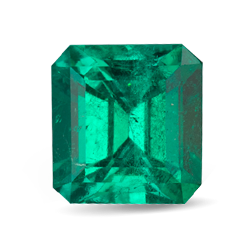
The name is thanks to its color, which looks like the color of the Aegean Sea (from Latin: acqua marina or sea water). Ancient sailors took on their voyages for protection and threw it into the sea to satisfy Poseidon’s wrath, the god of the seas.
The taste for Aquamarine has changed considerably over the years. The sea-green variety has long been the most prized. Today's consumers, however, look more for varieties that show darker shades of blue, in more saturated shades. The highest quality Aquamarine for cutting was found in the state of Minas Gerais, weighing 110.5 kg. Brazil has been one of the largest producers of this gem in the world since 1811.
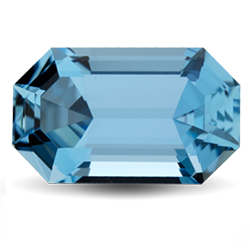
Often confused with Pink Tourmaline and Kunzite, Morganite's color ranges from pastel pink to soft peach.
The first gems of this type were found in 1911 on the island of Madagascar. Its name is a tribute to the banker and great gem connoisseur John Pierpont Morgan (J.P. Morgan).
Morganite is a variety of the Beryl group, which also includes Emerald and Aquamarine. Brazil today is the largest producer of this gem.
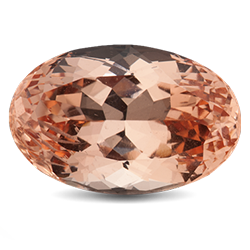
Origin of the name is due to the mine where it was first found, named Maxixe, in the state of Minas Gerais, in the 1900s.
The color is a dark blue from the natural radiation or color center in the atomic structure of the gem.
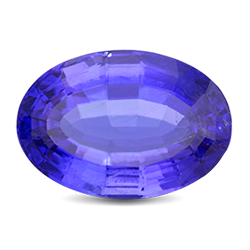
Origin of the name is due to the combination of two Greek words, "helios" or sun and "doron", present, that is, present from the sun.
The color varies from yellow to greenish and golden yellow.
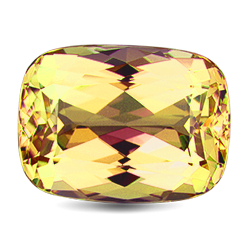
The difference between Green Beryl and emerald is in the intensity of the green color saturation.
The origin of the color is due to traces of iron and perhaps a little chromium.
Brazil, Zimbabwe and Australia are important sources of green beryl.
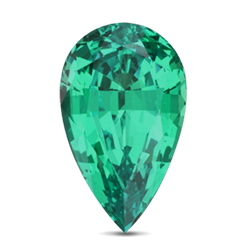
Alexandrite is a rare chrysoberyl that changes color according to the light: Emerald by day, Ruby by night. Vast Alexandrite deposits were discovered in 1830 in Russia and named after the young emperor Alexander II.
The gem won great attention from the country because its green and red colors represented the colors of the imperial flag of Russia. Today, Alexandrite is found in Sri Lanka and Brazil. Due to the scarcity and rarity, especially in larger sizes, it has become one of the most expensive Chrysoberyls.
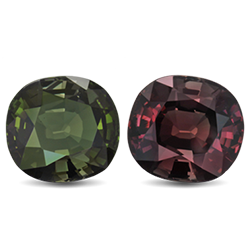
Chrysoberyl (from Greek, gold), has been known since antiquity. It can be found in green, yellowish green and brownish-yellow colors. Currently, Alexandrite and Cat’s eye Chrysoberyl are the most appreciated varieties.
Because it is a very hard and durable stone, it is particularly suitable for making jewelry.
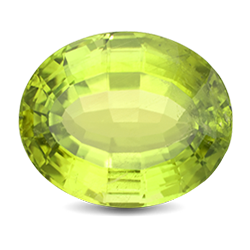
Amethyst is found in the colors violet, red and pale violet. It is the most appreciated stone of the quartz group. Greek legends and its wine-purple color, associated it with Bacchus, the king of wine.
At first it was used only by the nobility and the clergy, but over the years it became more and more accessible and despite its abundance, it never lost its value and never went out of style. It is attributed supernatural forces of luck, stability, protection from spells and nostalgia. It was believed that it awakened intelligence and brought peace of mind to anyone who used it. It is easily found in any size and shape. Brazil is one of the largest producers of Amethyst, being mainly found in the states of Rio Grande do Sul, Minas Gerais, Bahia and Para.
The great availability, affordable price and attractive color make Amethyst one of the most popular colored gems.
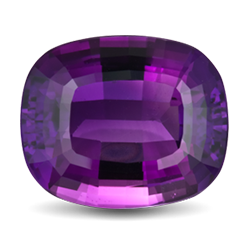
The name Citrine is derived from its lemon-yellow color (from the Latin "citrus"). The color of this gem varies from light yellow to golden brown and can be confused with the Imperial Topaz due to the similarity of colors. Naturally colored Citrine is rare. Most of the Citrine found on the market are actually Amethysts or Smoked Quartz benefited by heat. Amethysts from Brazil turn light yellow at 470°C and dark yellow between 550°C and 560°C.
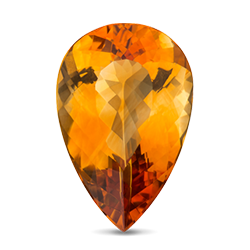
In one crystal one part is Amethyst, the other is Citrine, that is, one part is yellow and the other lilac.
Commercially, the darker and more defined the colors, the better; the less inclusions, the better; and the more balanced the color division, the better.
Bolivia is the largest producer of Ametrine in the world.
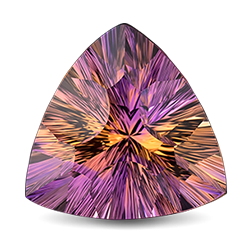
Rock Crystal is the name on the market for transparent quartz. It was first discovered in Greece.
Colorless and transparent, the Rock Crystal is the most common quartz variety on the planet. Although it is found all over the world, the most important deposits of Rock Crystal are in Brazil.
The name Crystal comes from the Greek word "krystallos" which means ice, as it was thought that quartz was ice formed by the Gods.
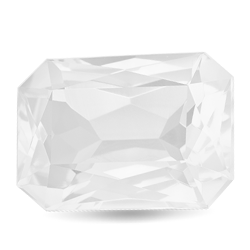
It is a transparent Quartz with inclusions. Usually the name is given thanks to the type and / or color of the inclusions that can be golden, red and black.
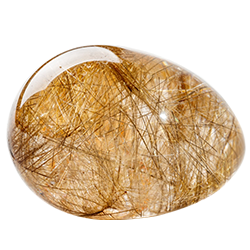
It has a lovely pinkish violet color from traces of manganese. It was discovered at a mine near San Diego, California and named after the remarkable gemologist G. F. Kunz, who first described the stone in 1902.
The gem can still be found today in the United States, as well as in Madagascar, Afghanistan and Brazil.
Although being new in the world of gems, it has already acquired history and tradition. Those who use it are believed to be blessed with a beautiful destiny. Its soft color refers to purity and innocence and it is considered as a symbol of fertility and the beginning of a new life.

The origin of the name Opal is the Sanskrit word "upala" which means precious stone. Opal always contains a little water in its chemical composition, in a proportion that ranges from 3 to 20% depending on the type.
It can be found in white, gray, blue, green, orange and black, the latter being very rare.
An aura of mystery and fascination surrounds the opal. The play of colors that emerges from its interior gives it an appearance that since ancient times has intrigued and confused man. Arab legends believe that Opals fell from the skies in flashes of light. The Greeks believed that Opal owners acquired the gift of prophecy and protected them from disease. Europeans have long regarded it as a symbol of hope, purity and truth.
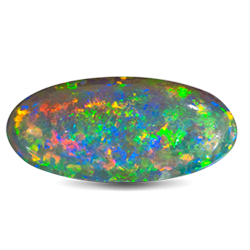
The name of this stone is derived from the Arabic "faridat", which means "gem". The Egyptians called it the "gem of the sun". Peridot was brought to Central Europe by the Crusades in the Middle Ages and was often used for ecclesiastical purposes. It was the most popular gem during the Baroque period. Its color can be greenish yellow, olive green or brownish green.
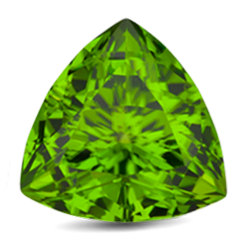
For centuries, the name Topaz has been associated with the color yellow. Today it is known that there are Topaz in a range of colors that include red, pink, lilac, yellow, orange, brown, as well as blue and green, in addition to transparent.
Origin of the name: from the island Zeberget in the Red Sea (the former Topazos), Sanskrit word, "tapas" which means heat, passion, fire.
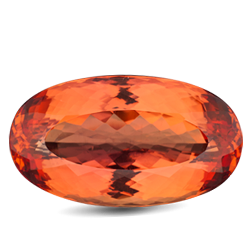
The Imperial Topaz is the most appreciated Topaz. Its name derives from “Czar Topaz”, as it was first found in the Ural mountains of the former Soviet Union and has always been associated with the Russian royal family. The emperor (Czar) used it as a symbol of nobility and power.
It was also a tribute to D. Pedro I who would have been enchanted by the exuberance of the colors of some Topazes that were offered to him during his stay in the old Vila Rica in Minas Gerais, where there has been reports of production since the year 1735.
For centuries, many Indians believed that wearing an Imperial Topaz above the chest guarantees long life, beauty and intelligence.
All the yellow and golden brown colored gems were called Topaz for some time, however, the golden color of the Imperial Topaz does not benefit from heat or another treatment process.
Occurrences have been recorded in Pakistan and Brazil, but currently Brazil is the largest producer of these gems with the largest mines in Dom Bosco, Rodrigo Silva and Saramenha, districts of Ouro Preto, Minas Gerais. This region has been producing the Imperial Topaz since 1735.
Despite all this “allure” of magic and beauty, the Imperial Topaz remains a gem reserved for “connoisseurs” and high jewelry designers. Due to the fact that it has become so rare, the price of this gem has increased considerably in recent years.
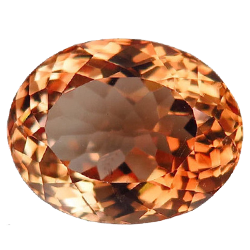
It is the most common and popular of topazes in the world. The search for this color is so great that jewelry manufacturers have developed several shades of blue, ranging from the lightest blue like in the sky (Sky Blue) to the deepest blue like a Sapphire (London Blue).
The vast majority of Blue Topaz on the market was once white and from careful heating and radiation processes, the stone gradually becomes blue. Although darker blue is the preference of most consumers, each blue has its own appearance and personality.
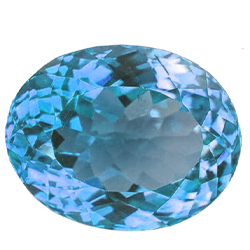
Tourmaline can be found in almost every color of the rainbow. No gem has a range of colors as rich as Tourmaline and this infinite variety of colors and shades can cause it to be taken, often, by other gems. Portuguese explorers, for example, discovered deposits of Green Tourmaline in Brazil in the mid-1500s, believing they were Emeralds. The confusion about the gem's identity is reflected in its name, which comes from the Sinhalese “toramalli”, which means “mixed gems”.
Tourmaline can be found Green, (Verdelite), blue (Indicolite), pink, red, purple (Rubelite), black (Schrol), yellow, brown (Dravite), colorless (Achroite) or multicolored (Bicolor and Watermelon).
Brazil is the main tourmaline producer in the world and was the first to produce the most famous of all: ParaibaTourmaline.
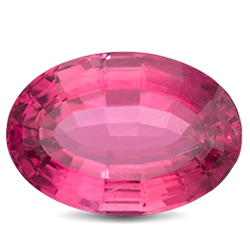
It has this name because it was discovered in 1989 in the municipality of Salgadinho, in the state of Paraiba, northeast of Brazil. The greatest production occurred between 1989 and 1991 when 10,000 to 15,000 grams of the optimum quality rough were extracted. Currently, production does not exceed 100gr of rough per month.
Paraiba Tourmaline, has copper and manganese which is responsible for its main characteristic: an electric or neon blue color. It can also be found in the colors emerald green, turquoise, sky blue, indigo, sapphire blue, blue-violet and lilac.
Currently, Nigeria and Madagascar are the largest producers of this rare Tourmaline variety.
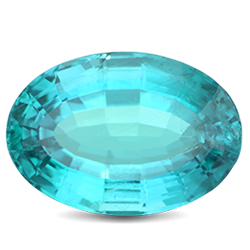
 Danxia.
Danxia.